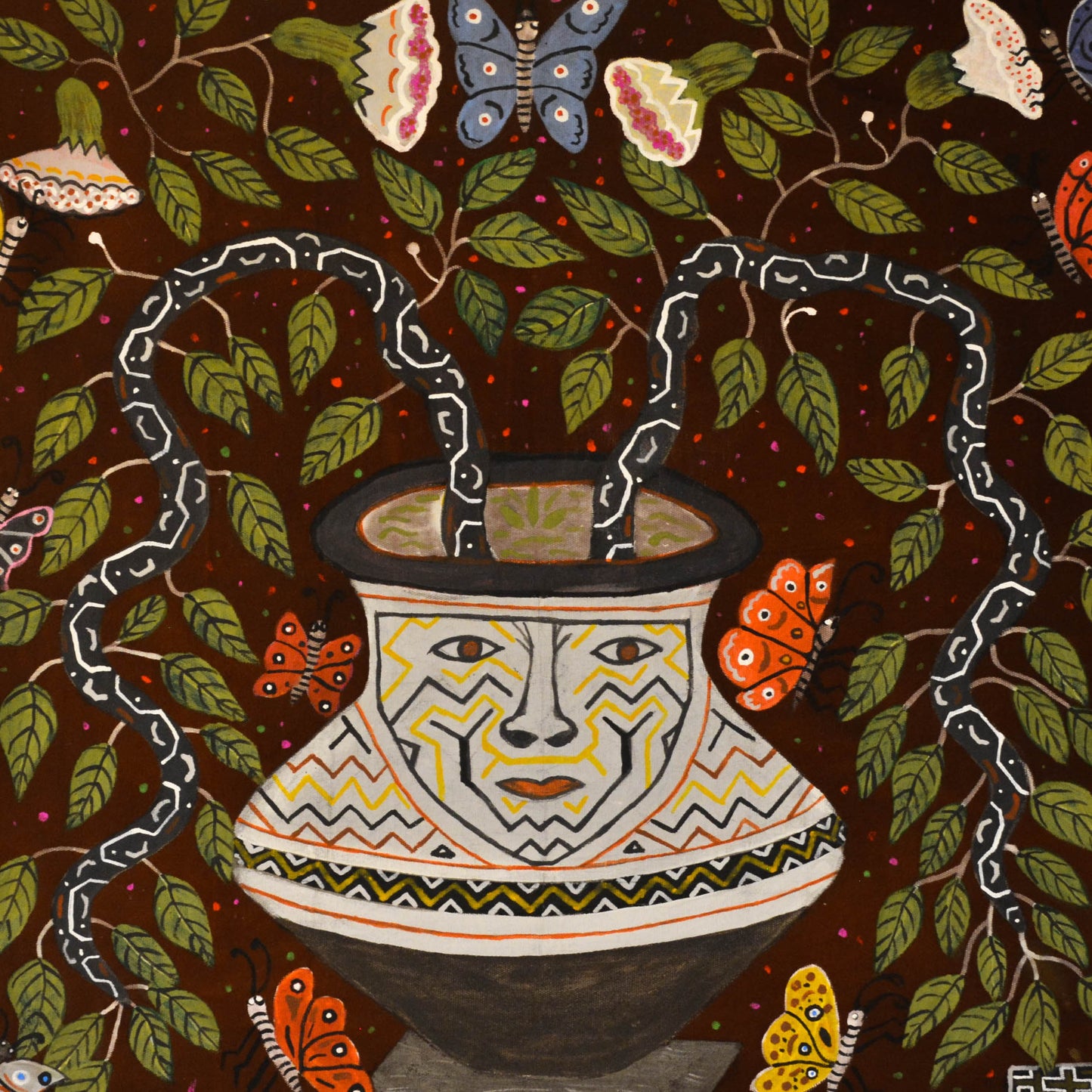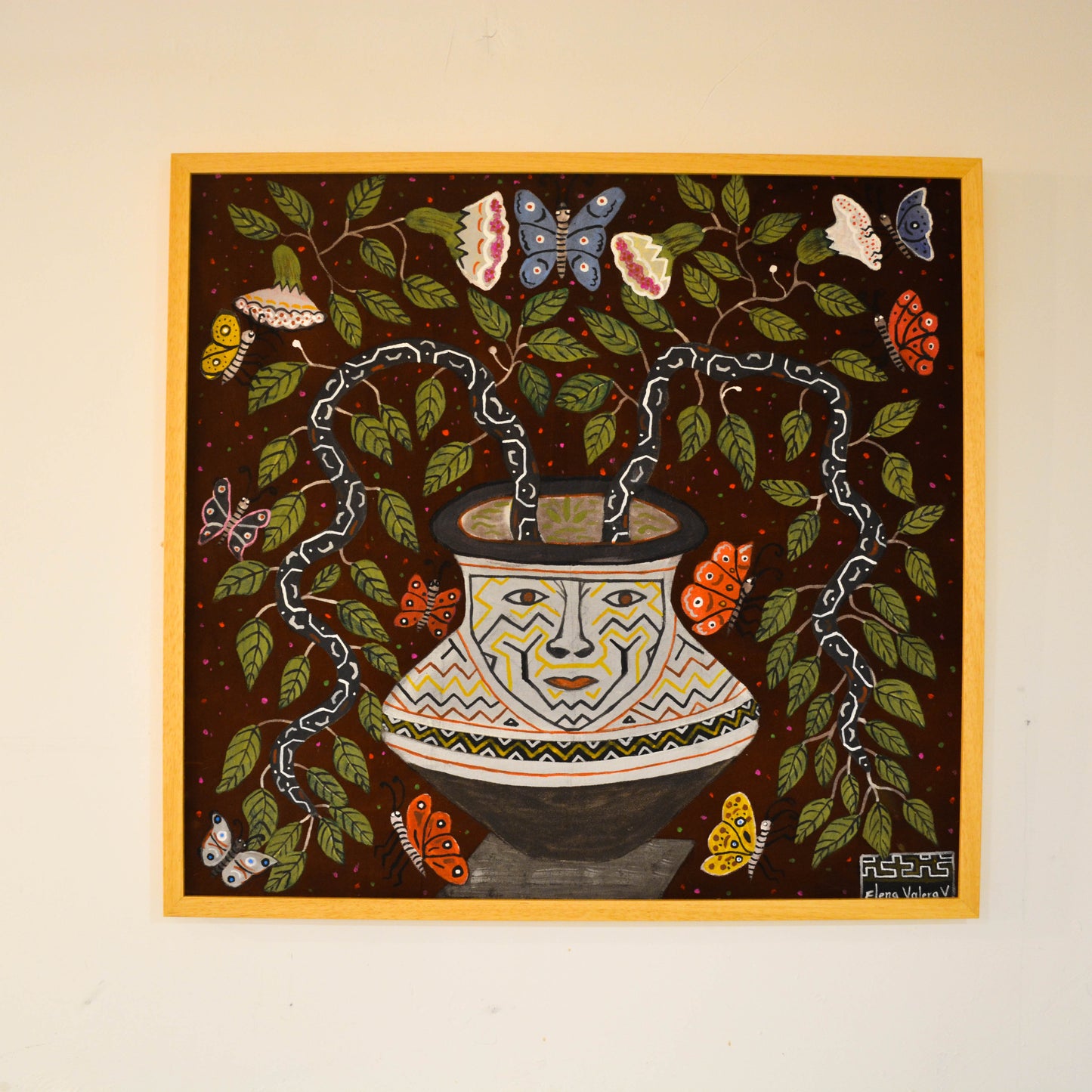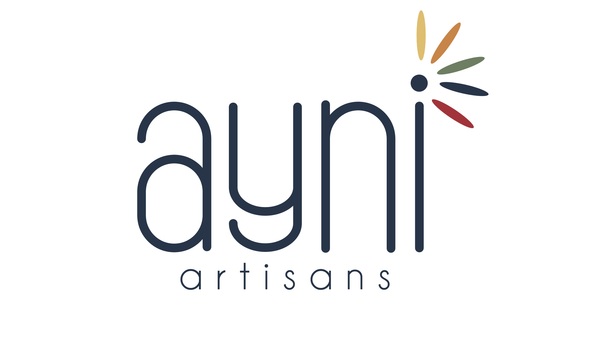ayni.artisans
PA001 - El Chomo, 2024
PA001 - El Chomo, 2024
Couldn't load pickup availability
Acrylic on canvas
72 × 75 cm
Inspired by visions from the Ayahuasca medicine, this piece depicts the Chomo (vessel), symbolizing the wisdom of our ancestors who underwent long diets to gain the healing power of Icaro.
Elena Valera Bahuan Jisbe – "The Earth Painter"
Born in 1968 in the Shipibo community of Roya, Ucayali, Elena Valera Bahuan Jisbe (also known as Bawan Jisbe) is a pioneering figure in contemporary Shipibo-Konibo painting. Her work blends traditional kené designs with visionary depictions of Amazonian mythology, sacred beings, and the everyday life of Shipibo communities.
Elena’s artistic journey began at the Andean Rural History Seminar of the National University of San Marcos, under historian Pablo Macera. Over the past decades, her work has been exhibited internationally, including at ARCO Madrid, the Abya Yala Museum in Ecuador, the Museum of Silkeborg in Denmark, and the Museo Metropolitano de Lima.
Her paintings serve as both a form of storytelling and an act of resistance, asserting the value of indigenous knowledge and reciprocity with the land. In 2018, the Museum of Contemporary Art in Lima acquired her painting La Gran Fiesta del Ani Sheati (2005), making her the first Shipibo artist included in their contemporary collection. Recognized as a Meritorious Personality of Culture by the Peruvian Ministry of Culture in 2015, she has also been awarded the Joaquín López Antay Medal by the Peruvian Congress.
Elena’s work has paved the way for other indigenous women artists, empowering them to share their voices through murals, embroidery, and performances. Her exploration of natural pigments and materials reflects a deep commitment to preserving the ecological and spiritual connections at the heart of Shipibo art.
This painting was previously exhibited at Pinta Miami 2024 as part of the special project To Paint the Forest Beings, curated by Irene Gelfman and Giuliana Vidarte. The exhibition celebrated indigenous art as a vital expression of Latin America’s collective identity, inviting viewers to engage in an intercultural dialogue that bridges past, present, and future.




